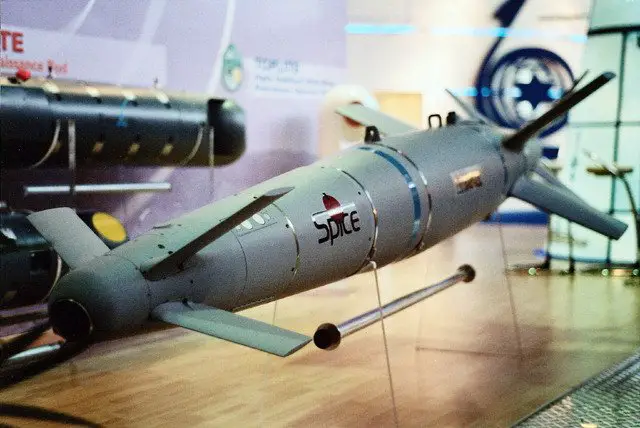Breaking news
India to clear defence deals worth $3 billion including Spice-2000 bombs with Israel.
|
|
|||
|
Defence & Security News - India, Israel
|
|||
|
|
|||
| India to clear defence deals worth $3 billion including Spice-2000 bombs with Israel | |||
|
Ahead of Prime Minister Narendra Modi's first visit to Tel Aviv later this year, the Cabinet Committee on Security (CCS) has begun to clear a slew of defence deals with Israel. The deals, some of which have been pending for long, are together worth well over $3 billion.
|
|||
|
|
|||
 Spice-2000 Bombs (Photo: http://sistemasdearmas.com.br/) Spice-2000 Bombs (Photo: http://sistemasdearmas.com.br/) |
|||
|
|
|||
|
Defence ministry sources on Tuesday said while the deals for Spice-2000 bombs and laser-designation pods have already been cleared by the CCS, the ones for acquisition of two more Phalcon AWACS (airborne warning and control systems), four more aerostat radars and the medium-range surface-to-air missile system (MR-SAM) for the Army are now on the anvil.
TOI had last month reported that most of these deals had reached the final stages of approvals, while the negotiations for the initial Rs 3,200 crore contract for 321 Israeli "Spike" anti-tank guided missile (ATGM) systems and 8,356 missiles were also making some headway after being stalled for months. Both the 164 laser-designation pods (Litening-4) and 250 advanced "Spice" precision stand-off bombs are meant to arm IAF fighter jets like Sukhoi-30MKIs and Jaguars for greater lethality and accuracy. The around Rs 10,000 crore joint development of the MR-SAM for the Army, in turn, will follow the similar ongoing DRDO-Israeli Aerospace Industries projects worth around Rs 13,000 crore for the Navy and IAF. The IAF-Navy variants have an interception range of 70-km, while the one for the Army will be 50-km. The acquisition of two additional AWACS for over $1 billion, in turn, will be a follow-on order to the three such "force-multipliers" already inducted by the IAF under a tripartite $1.1 billion agreement inked by India, Israel and Russia in 2004. The AWACS are basically Israeli early-warning radar suites mounted on Russian IL-76 transport aircraft. With a 400-km range and 360-degree coverage, they are "eyes in the sky" capable of detecting incoming fighters, cruise missiles and drones much before ground-based radars. Similarly, the four new aerostat radars - sensors mounted on blimp-like large balloons tethered to the ground - will follow the two such EL/M-2083 radars inducted by the IAF under a $145 million deal in 2004-2005. (Rajat Pandit - TNN / indiatimes.com) |
|||






















